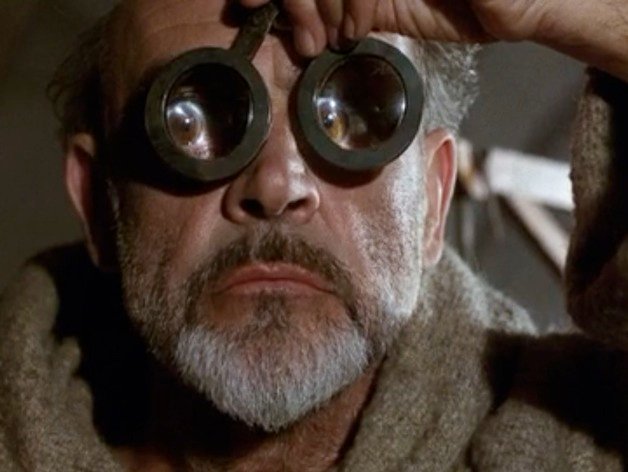Spectacles: technology unknown to the ancients
Commentary
Image. 'Conspicilla [Spetacles]', Plate XV from Jan van der Straet (a.k.a. Johannes Stradanus, 1523-1605), Nova reperta [New discoveries] (Antwerp, c. 1600). Artist: Jan van er Straet. Engraver: Jan Collaert I (1530–1581 ). Dimensions: sheet: 10 5/8 x 7 7/8 in. (27 x 20 cm). Source: Bodleian Library, shelfmark Don. b.8 (1)
Caption. ‘Inventa conspicilla sunt, quae luminum / Obscuriores detegunt caligines.’ / ‘Glasses have been invented, which remove the more obscure darkness from the eyes.’
Description. On the edge of a market square, a shop (to the left) sells prefabricated glasses and lenses and the cases to protect them when they are not being worn. An elderly man tries on a series of them, taken from a tray, to find one that improves his sight. Many of the other figures are wearing spectacles and illustrate occupations which depend on good eyesight: a scholar (in a doctoral cap) reads a letter (his glasses case suspended from his belt); a bookseller keeps his accounts; a seamstress sews; a cobbler prepares leather and his apprentice stitches it into shoes. As if to illustrate the alternative, in the background a blind man with a stick makes his way across the square, led by a guide dog.
Commentary. The appearance of the Nova reperta at the very outset of the seventeenth century is nowhere more evident than in what is not in this image. In October 1608, two Dutchmen -- one a spetacle-maker, the other a lens grinder -- applied independently to the States General for a patent for the devise later known as the 'telescope', which was famous across Europe as early as 1609 and more celebrated still after the appearance of Galileo's Sidereus nuncius in March 1610.
Origin. Eyeglasses were first manufactured in Italy, most probably in Pisa, around 1290. In a sermon of 23 February 1306, the Dominican friar Giordano da Pisa (ca. 1255–1311) wrote "It is not yet twenty years since there was found the art of making eyeglasses, which make for good vision... And it is so short a time that this new art, never before extant, was discovered. ... I saw the one who first discovered and practiced it, and I talked to him."* Essentially this same remark by Brother Giordano features in Umberto Eco's novel, The Name of the Rose (1980), set in 1327, and in the film based on it (starring Sean Connery, below).
conneryglasses_preview_featured.jpg

“Oculi de vitro cum capsula!” he cried. “I had heard tell of them from a Brother Jordan I met in Pisa! He said it was less than twenty years since they had been invented. But I spoke with him more than twenty years ago.”
“I believe they were invented much earlier,” William said, “but they are difficult to make, and require highly expert master glaziers. They cost time and labor. Ten years ago a pair of these glasses ab oculis ad legendum were sold for six Bolognese crowns. I was given a pair of them by a great master, Salvinus of the Armati, more than ten years ago, and I have jealously preserved them all this time, as if they were—as they now are—a part of my very body.”
“I hope you will allow me to examine them one of these days; I would be happy to produce some similar ones,” Nicholas said, with emotion.
“Of course,” William agreed, “but mind you, the thickness of the glass must vary according to the eye it is to serve, and you must test many of these lenses, trying them on the person until the suitable thickness is found.”
“What a wonder!” Nicholas continued. “And yet many would speak of witchcraft and diabolical machination. …”
Umberto Eco, The Name of the Rose.
Further images. The Nova reperta is a series of full series of 19 inventions unknown to the ancients. The full series is available here.
Further reading. Edward Rosen, 'The Invention of Eyeglasses,' Journal for the History of Medicine and Allied Sciences, 11 (1956), 13-46, 183-218; Thomas F. Glick, 'Eyeglasses', in Medieval Science, Technology, and Medicine: An Encyclopedia, ed. Thomas F. Glick, Steven Livesey, and Faith Wallis (New Yorik, 2005), pp. 167-8; *Vincent Ilardi, Renaissance Vision from Spectacles to Telescopes (Philadelphia: American Philosophical Society, 2007), p. 5 (quoted above).
